It is one of the most common foot pain among humans. Plantar Fasciitis is a common type of heel pain. The plantar fascia is a piece of tissue connecting each of the toes with part of the heel bone. This stabilizes the arch of the foot and helps control movement.
Contents
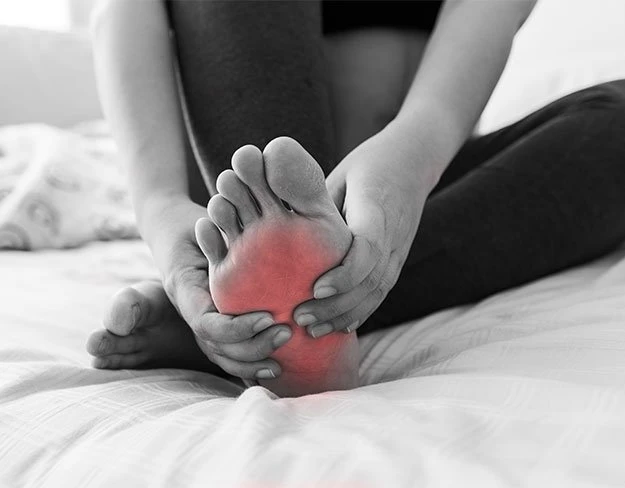
Plantar Fasciitis occurs when this tissue is inflamed. Pain is usually felt in the heel and the arch of the foot in one or both feet. The pain is usually worst during the first steps of the day or following rest. Pain can also arise following walking, running or standing for a long time.
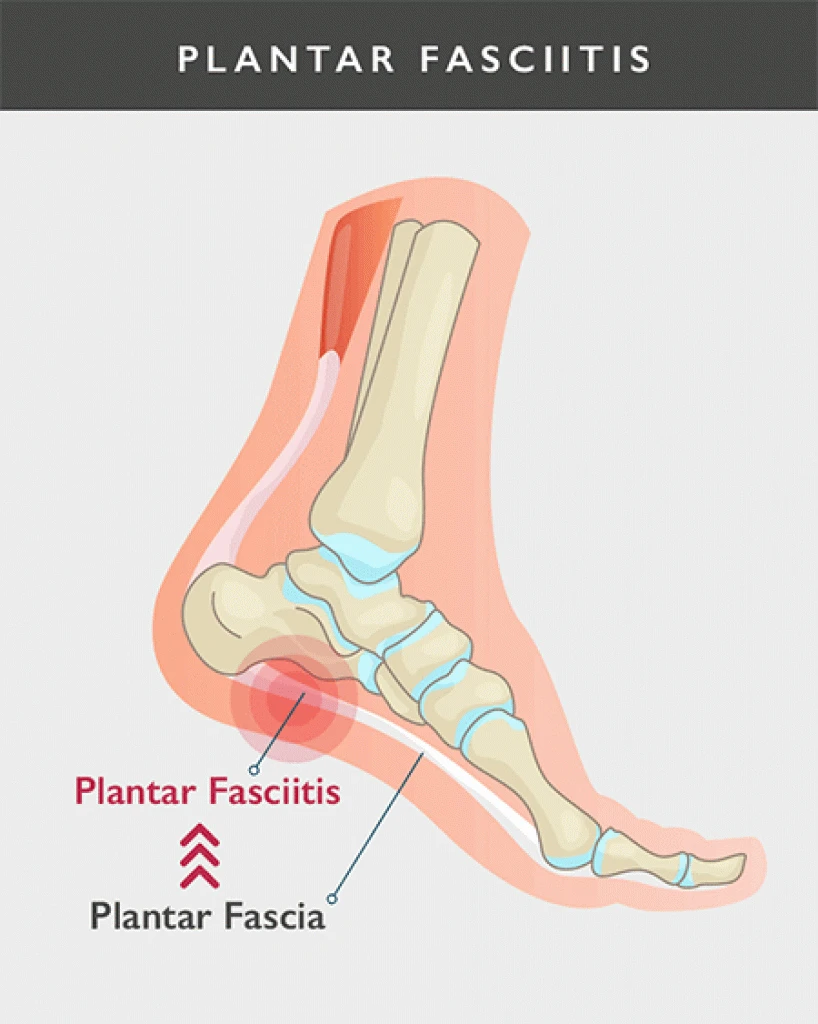
Plantar Fasciitis results from long-term pressure and repetitive strain on the foot from either lifestyle, exercise or old age. This repetitive strain leads to micro trauma, which leads to a repair response. The repetitive injury and repair causes chronic inflammation. There is often not a singular clear cause.
People at greater risk of Plantar Fasciitis are those that have tight calf muscles, high-arched feet or flat feet. It is also more common in overweight people, and in people who frequently perform high-impact activities like dancing or jumping which may cause many small injuries over time.
If there is a definite trigger for the pain, like high-impact exercise, this can be decreased to reduce the pain. Over-the-counter anti-inflammatory medications may provide some relief in the short-term.
Daily stretching of the plantar fascia and calf muscles can be helpful in your plantar fasciitis treatment. Orthotics support the plantar fascia and decrease the stress. Apply ice to the area of pain for 10-20 minutes at a time and up to three times per day. Steroid injections and shock wave are also methods of treatment. Unfortunately steroid injections can damage the fat pad covering the heel. The fat pad then becomes thinner and the condition can become more severe.
90% of patients will have relief of symptoms within 12 months. If there is no relief with the above methods, consider surgery as an extreme measure. Some reports suggest that the success rate of surgery is only about 50%. In the 1900s surgery focused on releasing the plantar fascia. There were complications associated with this surgery. Recently more success has been achieved by releasing the inner calf muscle at the knee rather than the plantar fascia[1].
Cross the right leg over the left leg. Place your fingers across the base of your toes and pull the toes back toward the shin until you feel a stretch in the arch or plantar fascia. You can push the arch with the thumb of the other hand to feel the tension in the plantar fascia. Hold the stretch for a count of 10. Repeat x 3. Alternate on other leg.
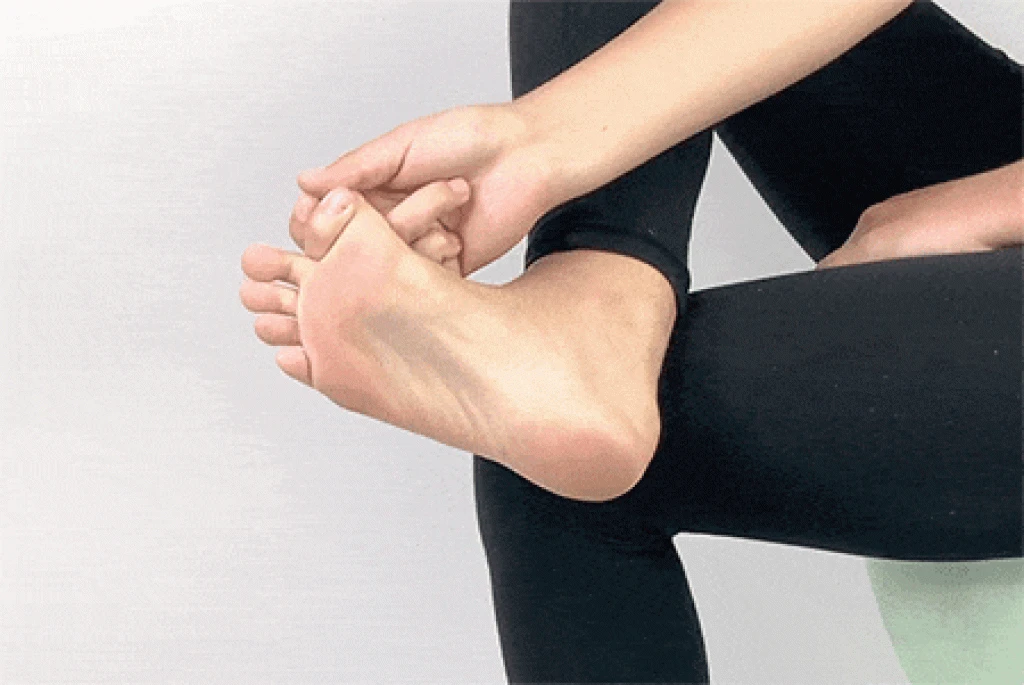
Stand facing a wall, about one and a half foot lengths away. Place both hands on the wall at shoulder height and outstretch your arms while adjusting your feet as necessary. Keep your heels planted on the floor while leaning forward. You should feel a stretch down the back of your legs. Hold for a count of 10. Repeat this exercise for three sets.
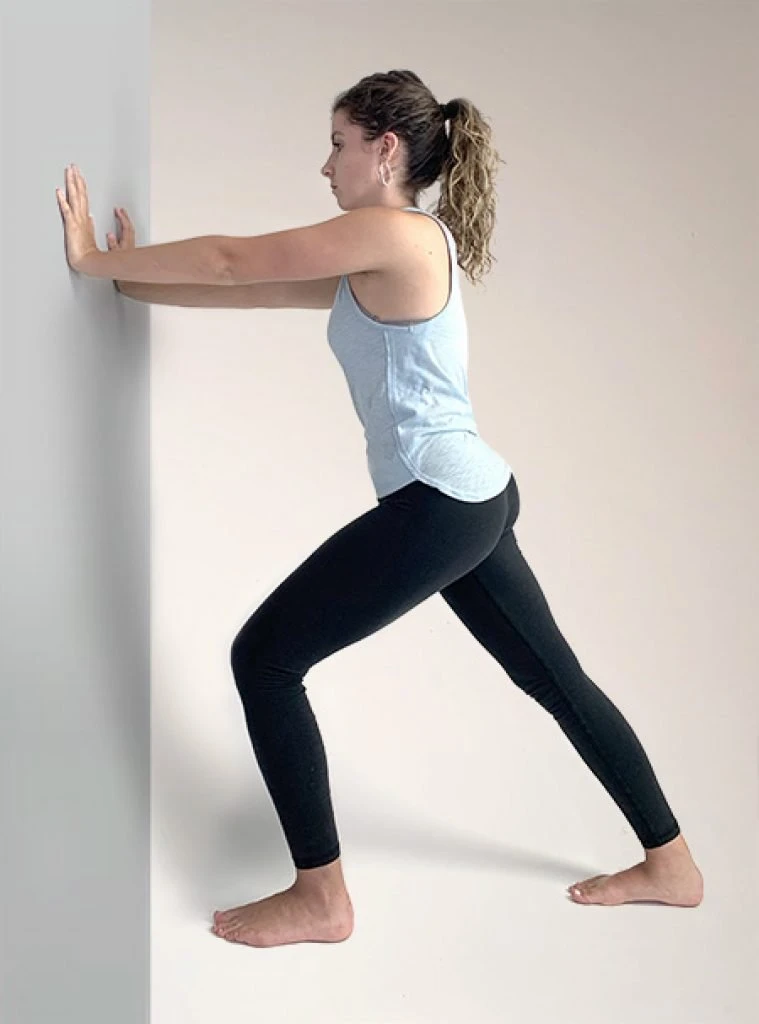
Stand with only the balls (front) of your feet on a step. Hold the wall for support. Raise your heels and try to stand on your toes to stretch your arch. Maintain the position for 10-20 seconds and lower your heels back down slowly. Return to normal. Repeat this exercise for three sets.
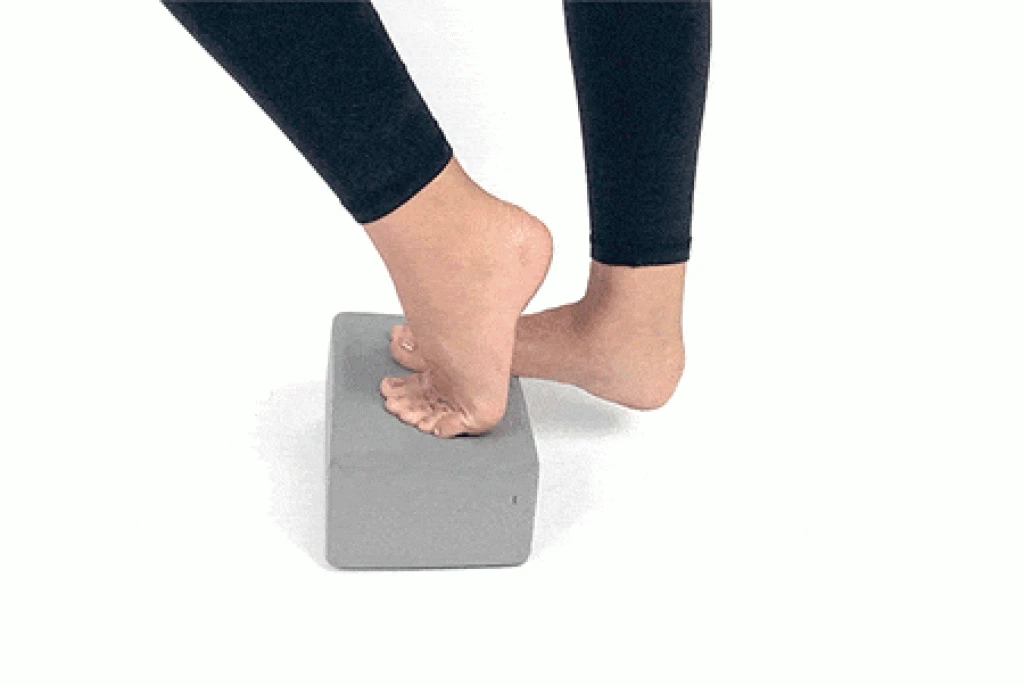
Orthotics cradles the foot and decreases the repeated stress on the plantar fascia. This helps to decrease inflammation and the pain associated with Plantar Fasciitis. Always consider orthotics in your plantar fasciitis treatment to help you long-term.
The systematic review by Lewis and colleagues showed that Orthotics relieve pain and improve function within 1 to 3 months with no risk involved[1].
The SOOTHE trial compared orthotics with steroid injections. This study showed that though injections provided earlier relief, orthotics provides relief in the longer term.
The usage of night splints can also help your plantar fasciitis heal and reduce the morning pain when you first put your feet on the floor. Several night splints are available on the market. It is important to specify that not everybody can sleep comfortable with a night splint.
The night splint is adjustable and is best to be worn at night when the foot is elevated. A night splint will keep you foot stretched and provide orthopedic support for the drop foot reducing the effects of morning heel pain associated with plantar fasciitis and Achilles tendonitis,
Article courtesy of: Dr. George Ampat FRCS (Tr & Orth), Consultant Orthopaedic Spinal Surgeon
 |
 |
 |
 |